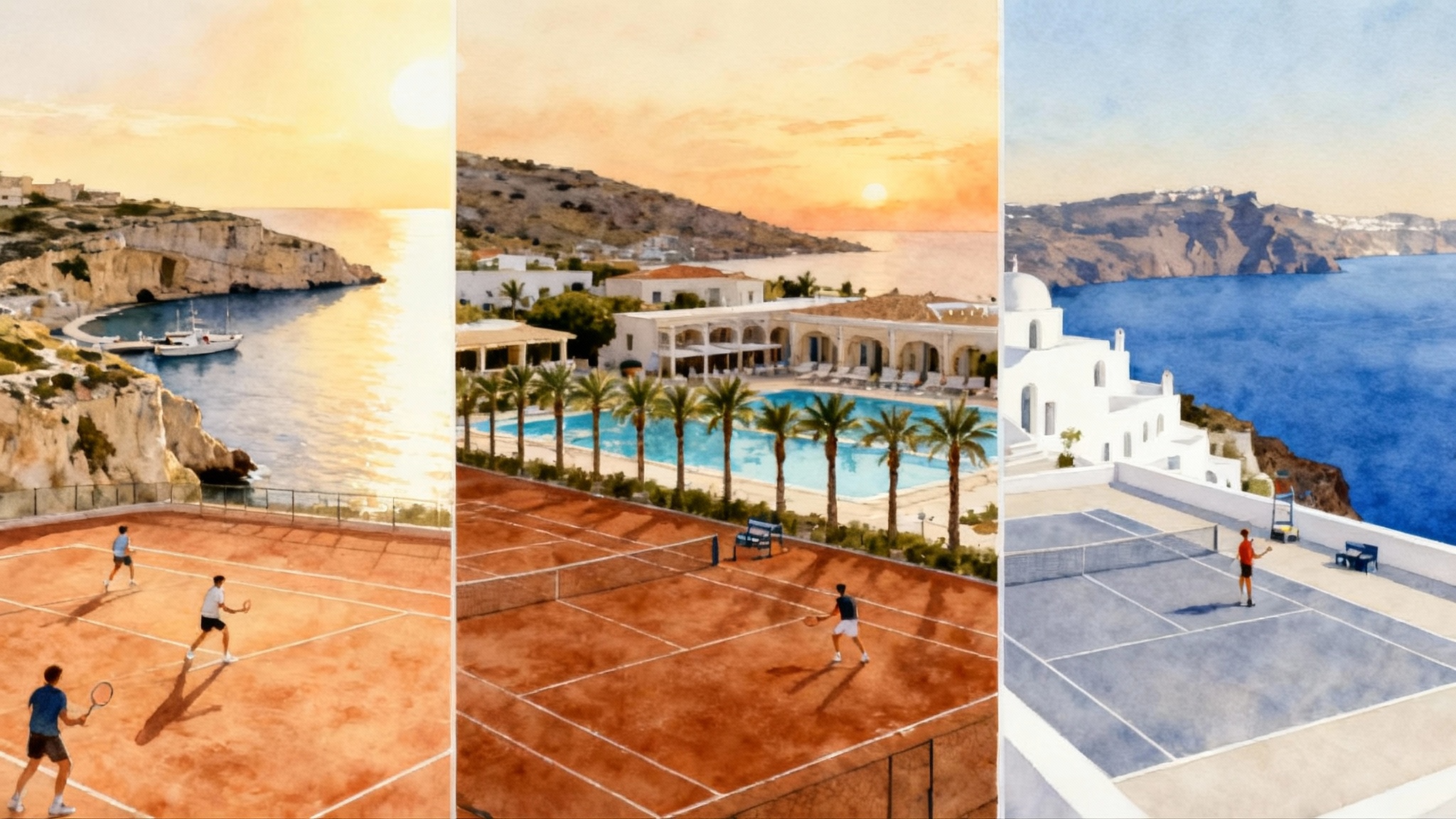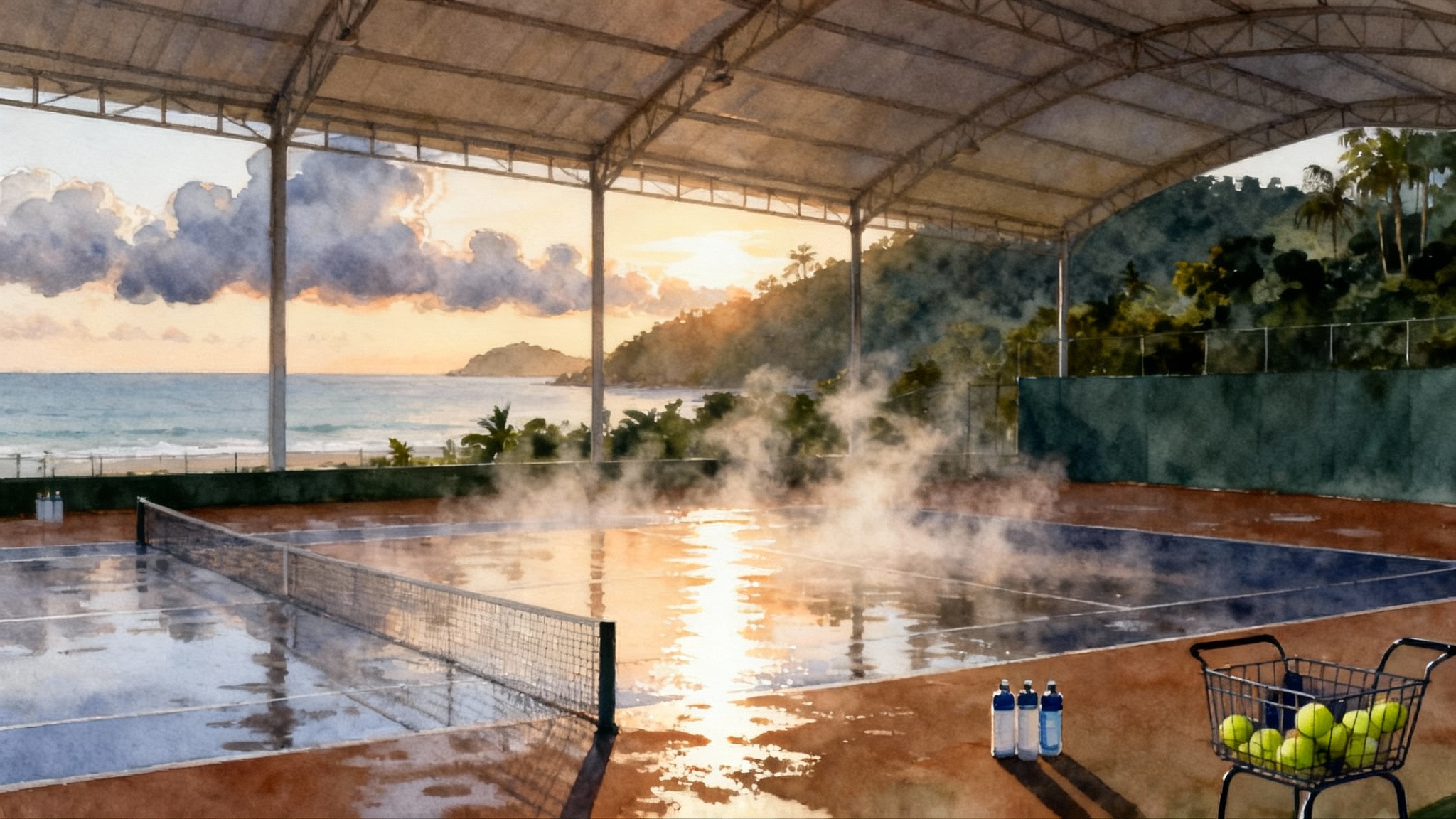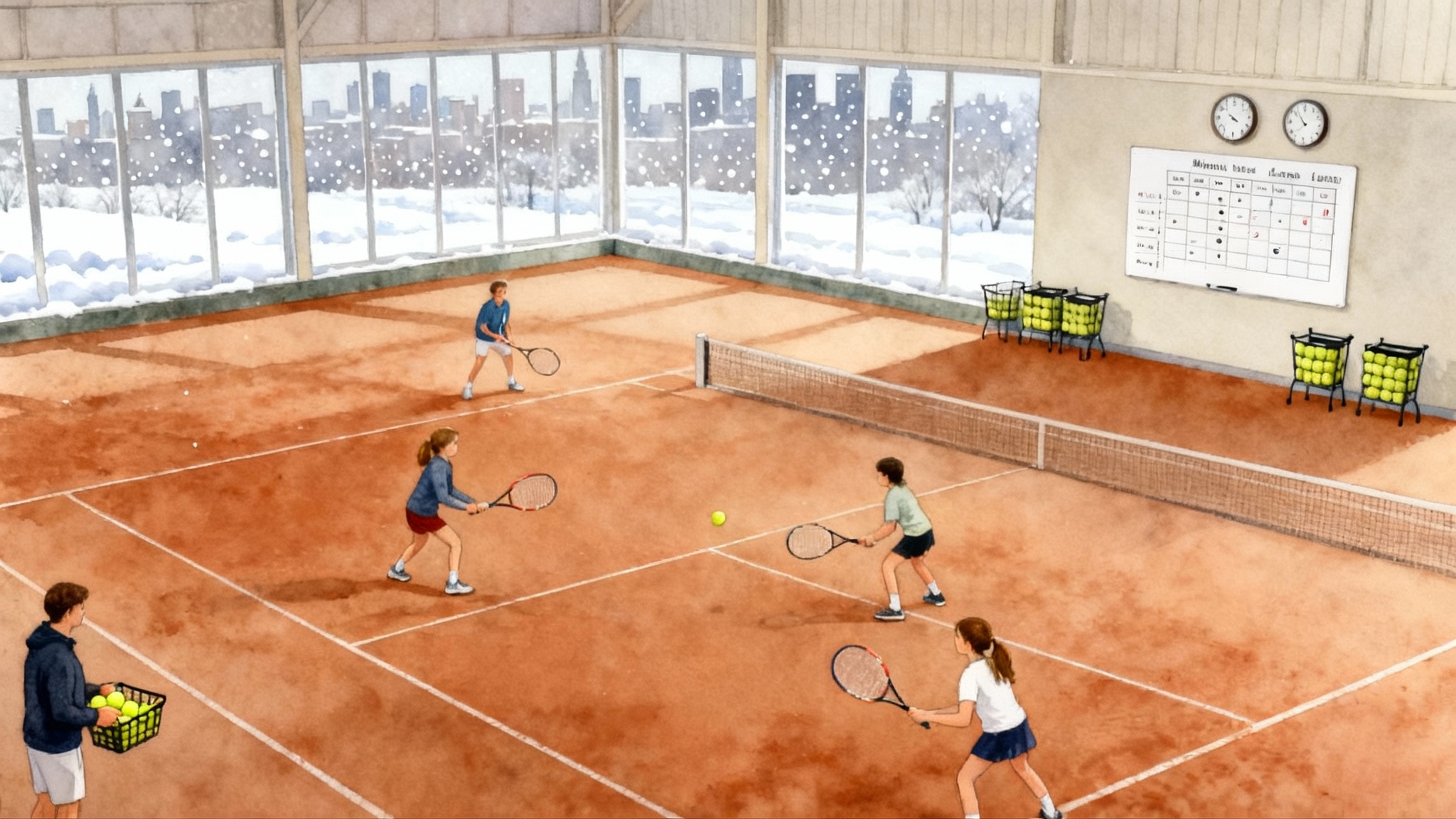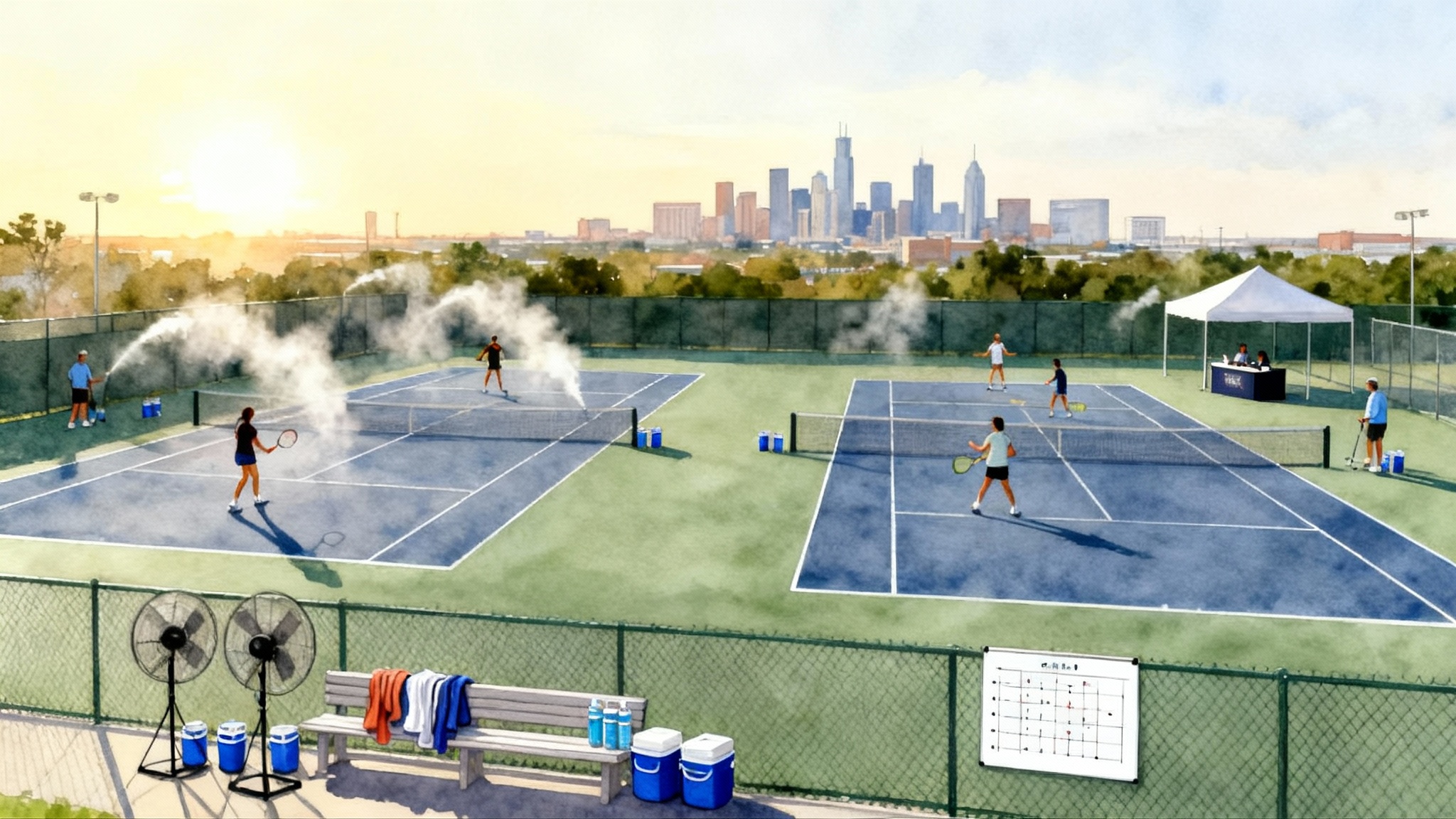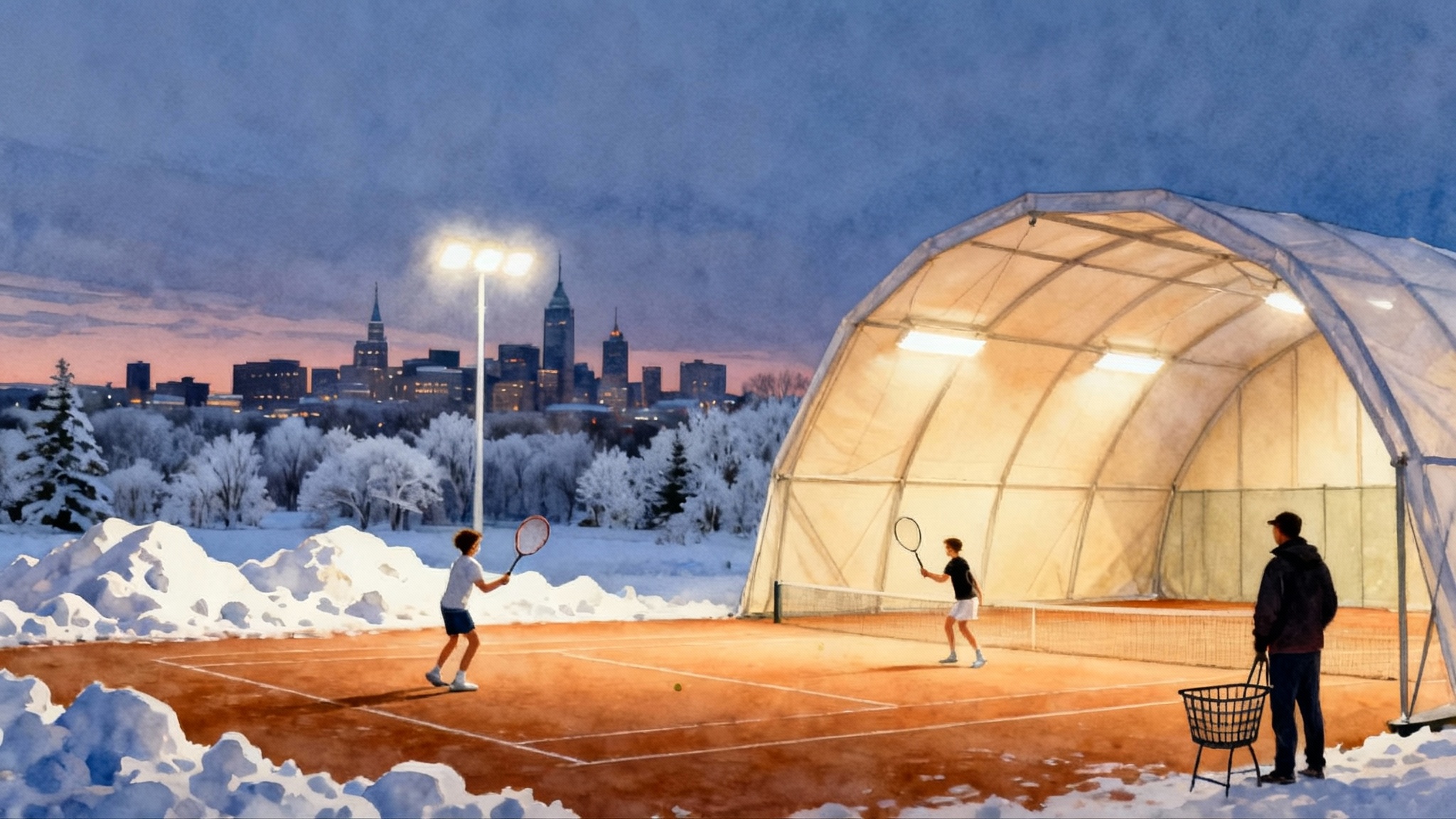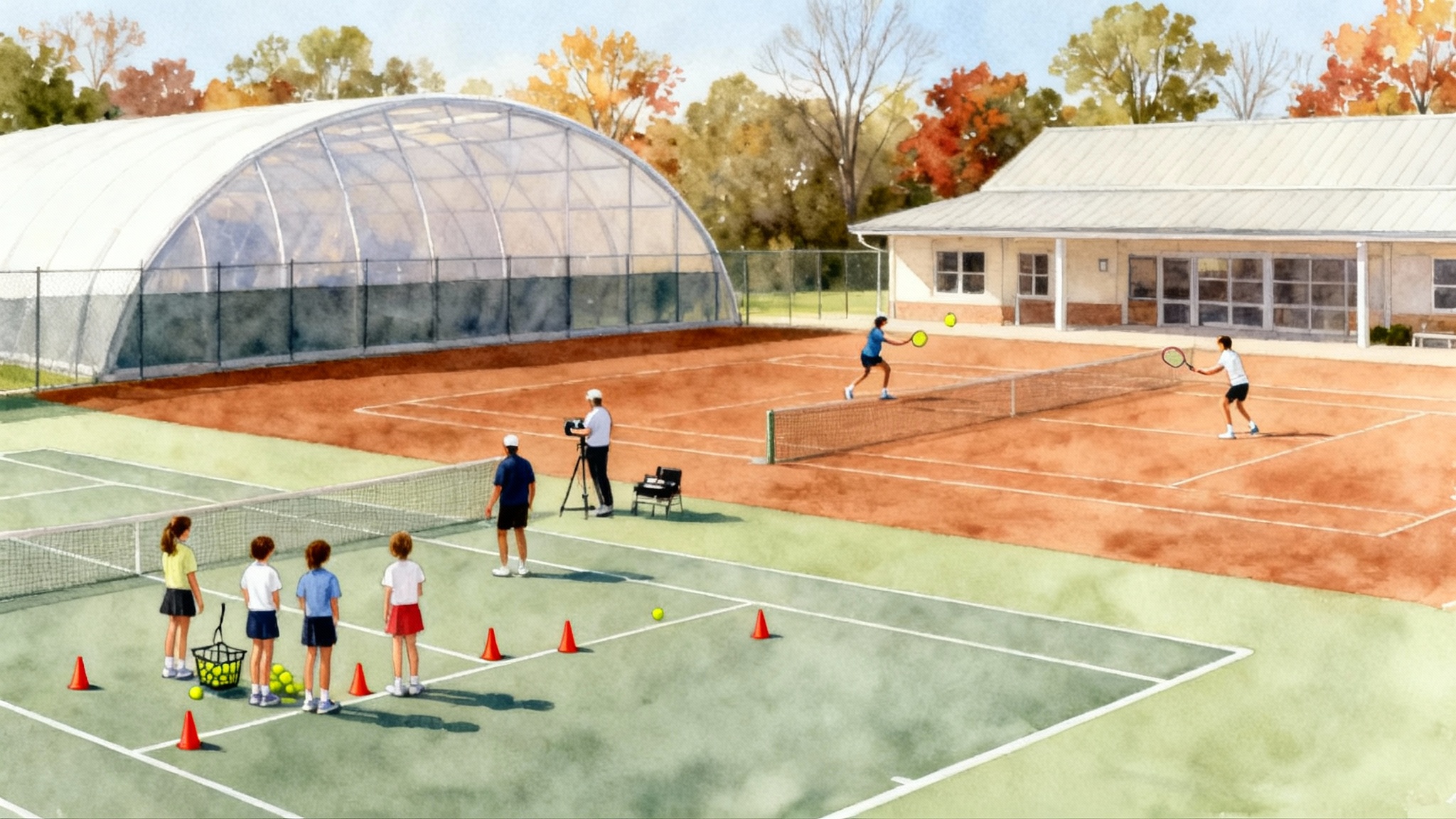Malta, Crete or Santorini? Tennis Academies 2025–2026
Planning a 2025–2026 tennis training week on a European island? We compare Malta’s IK and Asciak with Crete’s Lyttos and Santorini Tennis Academy across coaching, surfaces, pricing, seasonality, travel, lodging, tournaments, and family appeal.
